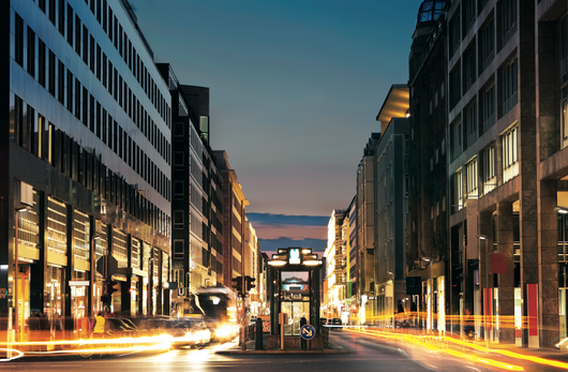Layers of light – how to construct great urban illumination
Putting together a truly effective urban lighting design means going beyond the functional
Bringing light to outdoor spaces is a complex job. A complete outdoor lighting solution must meet the needs of the space, the people in it, and the environment. That means building it up in three key layers. Here’s how.
1. Functional lighting
Functional lighting is about the basics: allowing people to see. This is especially important in demanding or critical activities, where effective light helps people find their way easily and stay safe. The functional lighting layer is usually provided by luminaires designed specifically to satisfy precise tasks and functions, with key requirements including high performance, and ease of installation and maintenance.
“Light can open up outdoor spaces after dark, transforming and defining them”
2. Urban lighting
The next layer is about bringing character and definition to the outdoor space. Light can open up outdoor spaces after dark, transforming and defining them. Urban lighting can help open up outdoor spaces after dark, supporting people’s wellbeing and making urban areas more liveable. Generally urban lighting is provided by decorative luminaires which are integrated into the environment, and whose appearance enhances the look of the space both by day and by night. Key features of urban lighting are low glare, good uniformity and aesthetic quality.
3. Architectural lighting
The final layer is about lighting the surrounding architecture. Good architectural lighting provides orientation points and highlights the landmarks of a city, while also encouraging social interactions. It can give a familiar landmark a whole new identity – or even a whole new colour. Architectural luminaires help to highlight materials, details and shapes. They can range from tiny accent lights to powerful projectors and wallwashers. Key features of architectural lighting include high mechanical and optical flexibility, controllability, aesthetic quality and a wide choice of mounting options.

